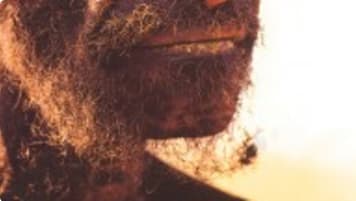Ghost Towns of Western Australia's Eastern Goldfields
Ghost Towns of Western Australia. Eastern Goldfields Following the discovery of gold in the 1890s, thousands of prospectors flocked to Western Australia’s Eastern Goldfields region. From initial finds in 1892 at Coolgardie.
29 Jun 21 · 8 mins read

Ghost Towns of Western Australia’s Eastern Goldfields
By Marco Stojanovik
Following the discovery of gold in the 1890s, thousands of prospectors flocked to Western Australia’s Eastern Goldfields region. From initial finds in 1892 at Coolgardie, some 500 kilometres east of Perth, by the early 20th century scores of romantically named mines were thriving in the region. With each successive discovery came a new wave of adventurers from around Australia and indeed the world.
Booming gold rush towns quickly emerged, with approximately 50 gazetted by 1902, the Eastern Goldfields becoming one of the more cosmopolitan places on the Australian continent. Hotels lined the main streets and bustling town centres soon boasted butchers, bakers, schools, and churches.
Most, however, survived no more than a decade, vanishing after the gold that supported them cut out. Today, they’re left as ghost towns, mere remnants of the past. Spread across the region, their buildings and museums provide an insight into the rich and colourful past of the gold rush era.
This article explores the history of several of these ghost towns to assist Odyssey Traveller’s Tours in Western Australia. Much of the information is drawn from Golden Quest Discovery Trail Guidebook by Barry Strickland.
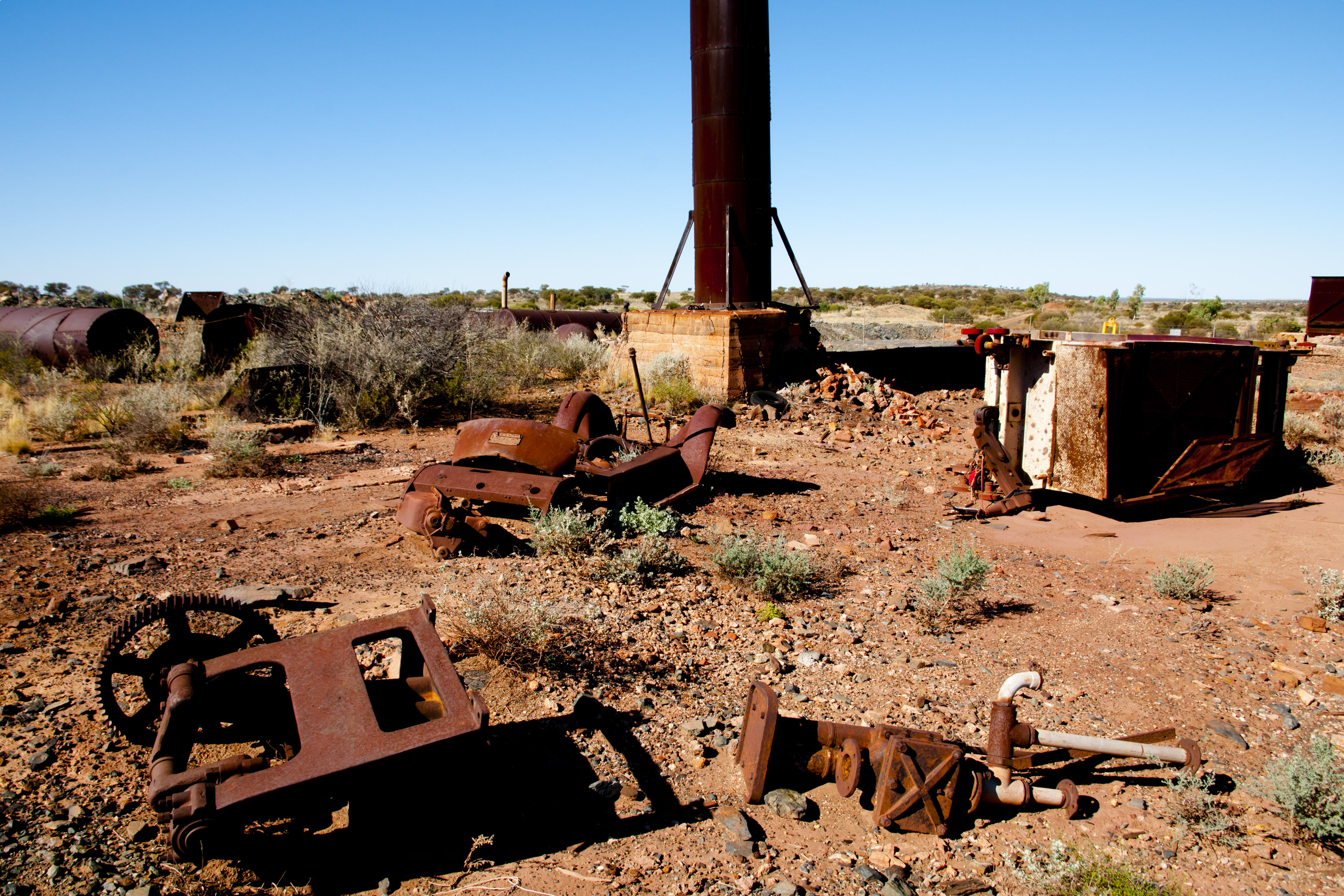
Gwalia
Just four kilometres south of Leonora, the hub for the Goldfields-Esperance’s mining and pastoral industries, is quite probably the best preserved Western Australian ghost town, Gwalia.
A three-man prospecting team led by Jack Carlson, a young Swede, discovered a gold reef in the area in 1896, which sparked the formation of the Sons of Gwalia mine the following year. This would become one of the largest gold mines in Australia, producing two and a half million ounces of gold till its closure in 1963.
The young geologist Herbert Hoover (later President of the USA) was the first manager of the gold mine. During his time in the role he recruited many workers from Italy which formed a large community, and he oversaw the design of the emerging townsite.
The town grew as miners built their camps and homes around the mine, soon joined by stores, a community hall, and the State Hotel. During its heyday in the early 20th century, the settlement grew to over 1,200 people, with busy hotels, businesses, shops, a swimming pool, and public tramway operating to Leonora.
The Sons of Gwalia mine closed abruptly in 1963, forcing miners and their families to seek employment elsewhere, with the town’s population falling from 1200 to just forty in three weeks. Mining resumed in 1984 after a new company, Sons of Gwalia NL, was established and adopted large-scale open cut methods of extraction. However, the town could never recover its population numbers.
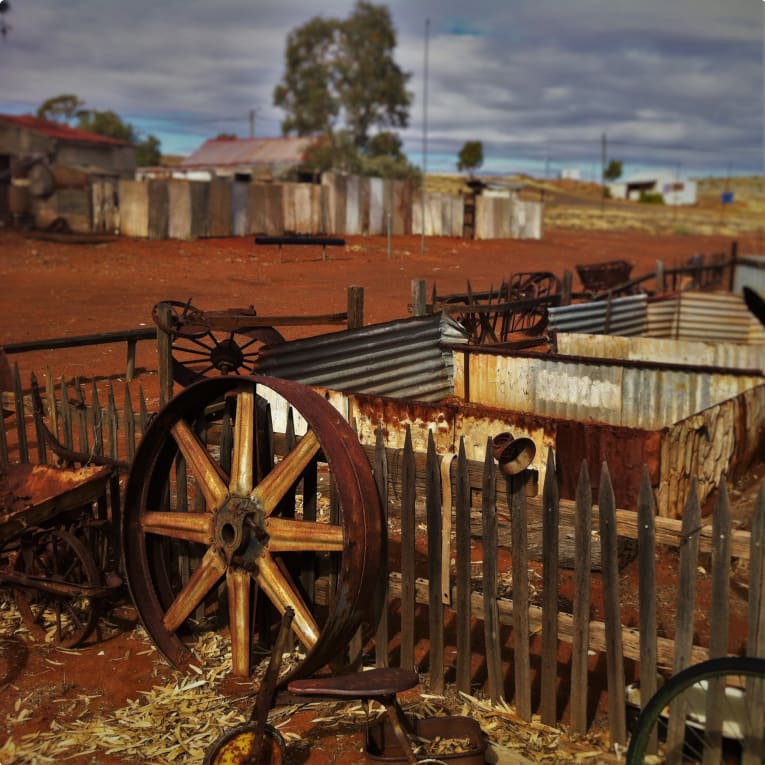
Nevertheless, the new company, working closely with the Gwalia Museum, has invested heavily in restoring a number of Gwalia’s historic buildings and mine structures. This includes the original mine manager’s house, various other mine buildings, general store and the two-storied State Hotel, along with a collection of rustic miners’ cottages constructed from iron, wood, and hessian.
In all, 31 restored buildings are open to the public, with many still containing discarded furniture and household items, offering an insight into the historical period and way of life. Visit and stay a night or two in one of the luxurious rooms of Hoover House Bed & Breakfast (the house where its namesake Herbert Hoover stayed during his visits to the area). Or simply put aside a day to step back in time and discover the fascinating history of the goldfields.
Goongarrie
Goongarrie was originally known as Roaring Gimlet because of the cold south-westerly wind that blows through gimlet trees growing in the area. It was also nicknamed 90 Mile due to its location 90 miles north of the larger gold mining town of Coolgardie.
The gold struck here in 1893 was only the second discovery after that in Coolgardie. The news immediately sparked a mini stampede as 150 men flocked to what would become Goongarrie to busily stake their claims.
A small town quickly sprung up, gazetted in 1895, with several shops, a post and telegraph office and two hotels. At its peak it also included several bed and breakfasts and restaurants, a thriving retail area, a boarding house, and was the stopover place for the daily coach between Coolgardie and Menzies before the rail line also went through.
Goongarrie’s mines, however, failed to live up to the early expectations. By the early 1900s most people had abandoned town for richer fields elsewhere, leaving a population of only 66 by 1903 to patronise the solitary store and pub. Today only three historic railway cottages remain of the town.
The site has since been declared as part of the Goongarrie National Park, which features granite outcrops and includes part of Lake Marmion. The park is known for its profusion of attractive wildflowers and everlastings.

Kookynie
Kookynie was another one of those mining towns which grew rapidly and died slowly. From humble beginnings in 1898 as a tent and hessian town, by 1901 it was well-made with many brick buildings, and by 1903 it was booming as a busy and prosperous mining centre.
At its peak it boasted hotels, banks, a chemist, a brewery, a racecourse, shops, factories, churches, a hospital, the region’s first swimming pool, and even a red-light district run by Japanese residents living in the area. By 1907 there were well over 3,500 residents living in Kookynie, and four trains arrived daily from Kalgoorlie.
There were a few mine among the 200 leases taken up in the area, while outside mines also carted their ore into the 50-head battery. The Cosmopolitan Gold Mine was the main mine, frequented by Englishmen, Welshmen, Scotsmen, Irishmen. By 1912, however, the deposits in the mines began to dwindle, and then serious flooding in 1923 caused the closure of the Cosmopolitan Gold Mine. The town’s population dropped drastically thereafter.
Today, only 13 reside in this living ghost town. Many of its ruins are still relatively intact and can be explored via a walk trail. Highlights include the fully restored row of shops on Cumberland Street, as well as the significant ruins of the Cosmopolitan Hotel and the remnants of the National Hotel.
The vintage Grand Hotel, opened in 1902, is also still trading, with its big verandas and spacious rooms. It also houses a collection of historic photographs and memorabilia about the town’s rich mining history and is home to Willie the runaway outback horse who wandered into the pub one day years ago and has yet to leave.

Another notable nearby attraction is the Niagara Dam, built by C. Y. O’Connor in 1898 to provide freshwater for the steam locomotives on the railway extending north from Kalgoorlie. The wall was built across ideal breakaway country to dam water fed from a 720-acre watershed. When completed it could hold over 140 million litres of water. Today it is a popular picnic spot for a refreshing swim or camp under the stars.
Broad Arrow

The town of Broad Arrow was originally gazetted as Kurawah in 1896, located where gold was first discovered by the prospectors O’Mara, Quinn and Pike in 1893. The name was then officially changed to Broad Arrow in 1897. This was derived from the trail of markers, shaped as broad arrows, left by O’Mara for his nephew to follow to find the gold site.
The discovery sparked a gold rush in the region, with many thousands of ounces of gold unearthed in the pursuing years. The richest mines in the early years were the Broad Arrow Consols, Hill End, and the Golden Arrow. Other mines also kept the town going and during the years 1914-22 one group of leases, including the Oversight and Tara, yielded about 17,400 ounces of gold.
During the town’s peak, at the turn of the century, Broad Arrow had a population of 2,400 and boasted eight hotels, a large hospital, a Resident Magistrate, two breweries, two banks, several stores, several blacksmiths, a soft drink factory, a Dramatic Society, and even a Mayor and Councillors. It also served, after the arrival of the railway in 1897, as the administrative centre for smaller settlements in the area including Ora Banda, Smithfield, Black Flat, White Flag and Grant’s Patch.
Broad Arrow’s decline, like so many other centres, was just as spectacular. By 1901 the population had dropped to 542 and a decade later there were only 280 in the town. By the mid-1920s the gold had run out and the remaining miners moved on to other goldfields or returned to Kalgoorlie. The town, which had only lasted for 25 years, had been abandoned.
Today only a handful of buildings remain intact, including the former stationmaster’s home and the historic Broad Arrow Tavern. Built in 1896, the Tavern is a quintessential Aussie outback pub, providing drinks, food and accommodation to visitors. It is particularly notable for having almost every interior wall covered with graffiti and handwritten notes from past visitors. It also featured in the long forgotten movie, The Nickel Queen (1971), which starred Googie Writhers, Ed Devereaux and John Laws.
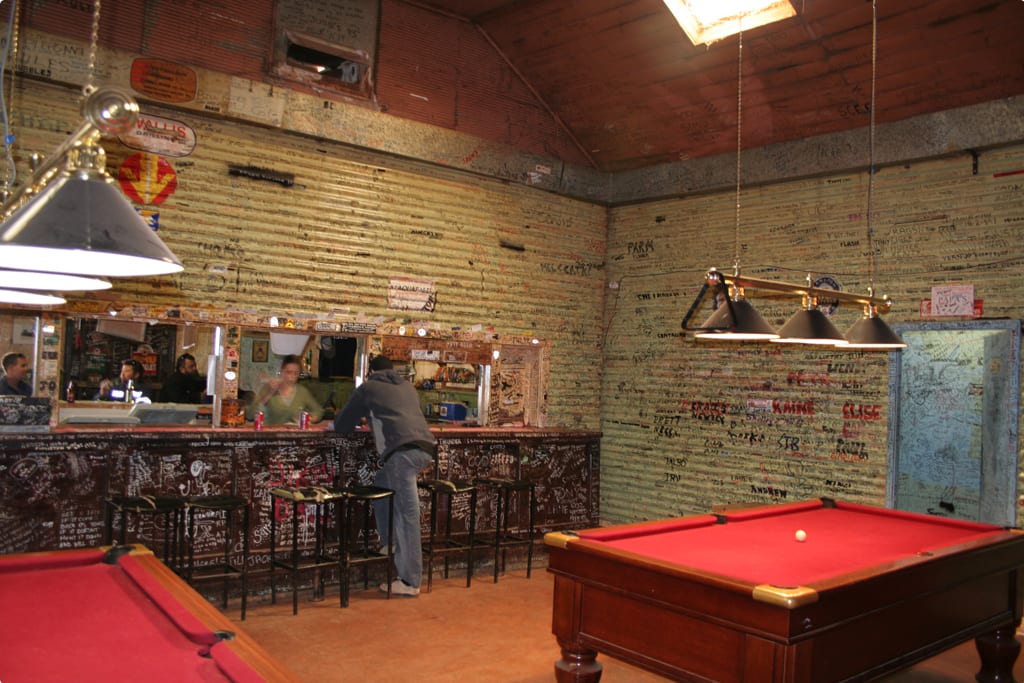
Ora Banda
The area around Ora Banda was opened up in August 1893 after prospectors Cashman and Lee struck gold. By September they had obtained 1000 ounces, causing a rush to the district, and a little centre soon formed known as Cashman’s.
This early settlement was abandoned in 1906, when rich ore bodies were found about 3 km south. Here, closer to the new mines, the Ora Banda townsite was established. Loosely translated from Spanish as meaning ‘band of gold’, it took its name from the mine that had been established by the Weston brothers.
Ora Banda was larger and lived longer than most of the other ghost towns on the goldfields, due to the success of the nearby Gimlet and Victorious mines and several major finds in the district which fed ore to Ora Banda’s State Battery. By 1920 it was routinely home to some 2,000 miners and their families. It also able to withstand the Great Depression years of the 1930s, even experiencing a mini boom.
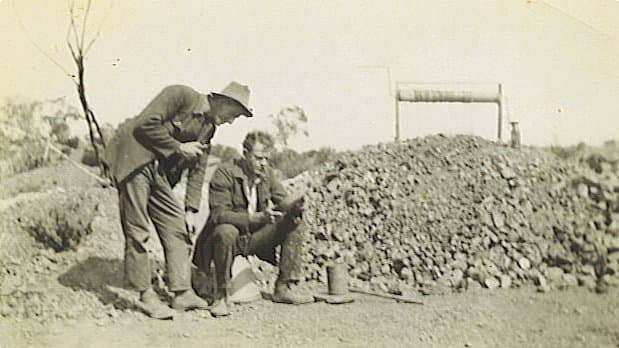
In the early-to-mid-1900s there were many buildings constantly ‘on the move’ due to the transient nature of many of the goldfields’ towns. One town’s failure would mean another’s gain, with many of Ora Banda’s public buildings, including its post office, hall, police station, school, and Catholic church, coming from the dwindling town of Paddington.
Although Ora Banda enjoyed a longer life than most of its contemporaries, ultimately it could not escape the same fate. As the nearby ore started to dwindle, so did the population, dropping to an economically low level by the late 1950s and forcing the closure of the hotel and last store.
Mining operations ceased entirely in the late 1970s, leaving many of the town’s abandoned buildings and isolated homesteads to rot. The hotel, however, was restore in the mid-1980s and is licensed to serve drinks to the local prospectors and passing trade. The Government Battery also still stands, now converted into a museum.
Tour of Western Australia
Odyssey offers easy, convenient, and relaxed escorted small group tours across the great state of Western Australia. We explore the state’s unspoiled native wilderness, sites of its ancient Aboriginal history, World Heritage Sites, and breath-taking wildflower blooms, all with some truly spectacular scenery along the way. This and more is all waiting to be explored on one of Odyssey’s small group tours of Western Australia, designed for the senior traveller, and led by experienced, and enthusiastic like-minded people.
Crafted tours for mature world travellers include our:
- Western Australia Tour
- Small Group Tour of Australia’s Kimberley
- Wild Flowers Tour of Western Australia
- Outback Tour of the Northern Territory and Western Australia
Articles about Australia published by Odyssey Traveller:
- The Kimberley: A Definitive Guide
- Uncovering the Ancient History of Aboriginal Australia
- Aboriginal Land Use in the Mallee
- Understanding Aboriginal Aquaculture
- Mallee and Mulga: Two Iconic and Typically Inland Australian Plant Communities (By Dr. Sandy Scott).
- The Australian Outback: A Definitive Guide
For all the articles Odyssey Traveller has published for mature aged and senior travellers, click through on this link.
External articles to assist you on your visit to Western Australia:
Related Tours
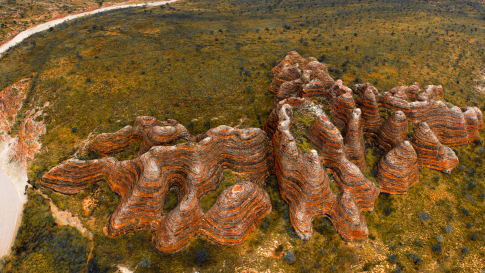
19 days
Sep, Apr, May, Jun, Jul +2Kimberley, Purnululu, Tiwi Islands and Arnhem Land
Visiting Northern Territory, Western Australia
Small group tour touring most of the Australian territory, travelling through the outback and visiting many of the famous sights as well as off the beaten track locations, giving you the opportunity the explore and meet our people in the most remote locations and far north Kakadu and the Kimberley.
From A$14,995 AUD
View Tour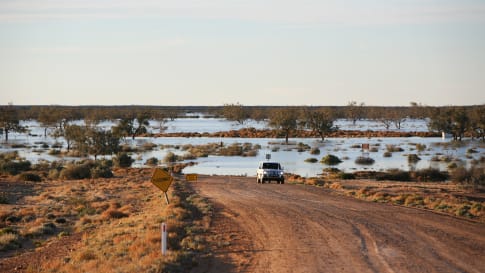
65 days
MarLong tour of Australia for a small group
Visiting New South Wales, Northern Territory
Small group tour for senior couples and solo travellers touring Australia. Travelling through the outback and visiting many of the famous sights as well as off the beaten track locations. Learn about the history of the people who explored the deserts, from indigenous communities to Europeans, as well as Burke and Wills, visit White Cliffs, Marree and far north Kakadu and the Kimberley.
From A$48,995 AUD
View Tour
13 days
May, Jun, Jul, Aug, SepSmall group tour of Australia's Kimberley
Visiting Western Australia
Escorted small group tour of the Kimberley. We explore and visit The Bungles, Bell Gorge, Mitchell plateau & Halls Creek in the dry season. Amazing landscapes intertwined with Aboriginal communities resident more than 45,000 years.
From A$15,390 AUD
View Tour
22 days
Feb, Mar, Apr, Jun, Aug +1Western Australia tour
Visiting Western Australia
Escorted small group tour for senior and mature travellers as a couple of solo traveller. Upto 12 people of WA's regional History tour. The program including Esperance, Kalgoorlie, Gwalia and Perth. Local guides and program leader share knowledge about this fascinating region.
From A$13,695 AUD
View Tour
days
Apr, May, Jul, Aug, Sep +2Central and Western Australia by Air
Visiting Northern Territory, Western Australia
Small group escorted air tour of Central and Western Australia, where the coaches have yet to reach. Outback Australia, Aboriginal art, Standing stones, Derby, Broome, Tanami desert, Kununurra explored for mature couples and single travelers.

days
Mar, May, Aug, Oct, Jan +1Small group tour of Victoria for Senior travellers
Visiting Victoria
This 16 day escorted small group tour of Victoria for the senior or mature traveller who enjoys learning whether as a couple or solo traveller explores an area of central Victoria that is rich in historic houses, gorgeous gardens and some amazing art.

15 days
Sep, Dec, Jan, Feb, Mar +2Eyre & Yorke Peninsulas, and the Gawler Ranges
Visiting South Australia
Small group tour South Australia. Yorke, Eyre, and Gawler Ranges, discover the local history.
From A$10,350 AUD
View Tour

